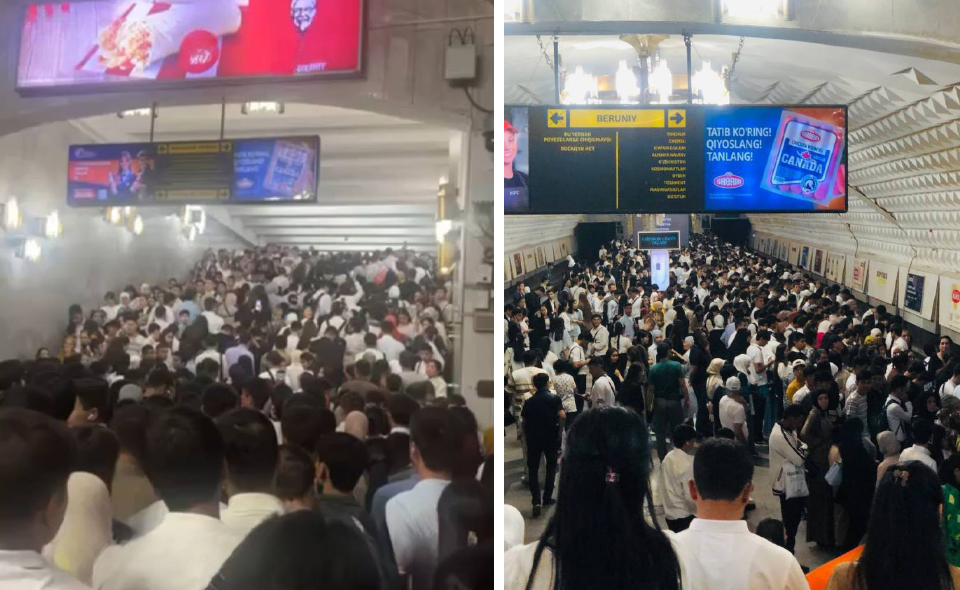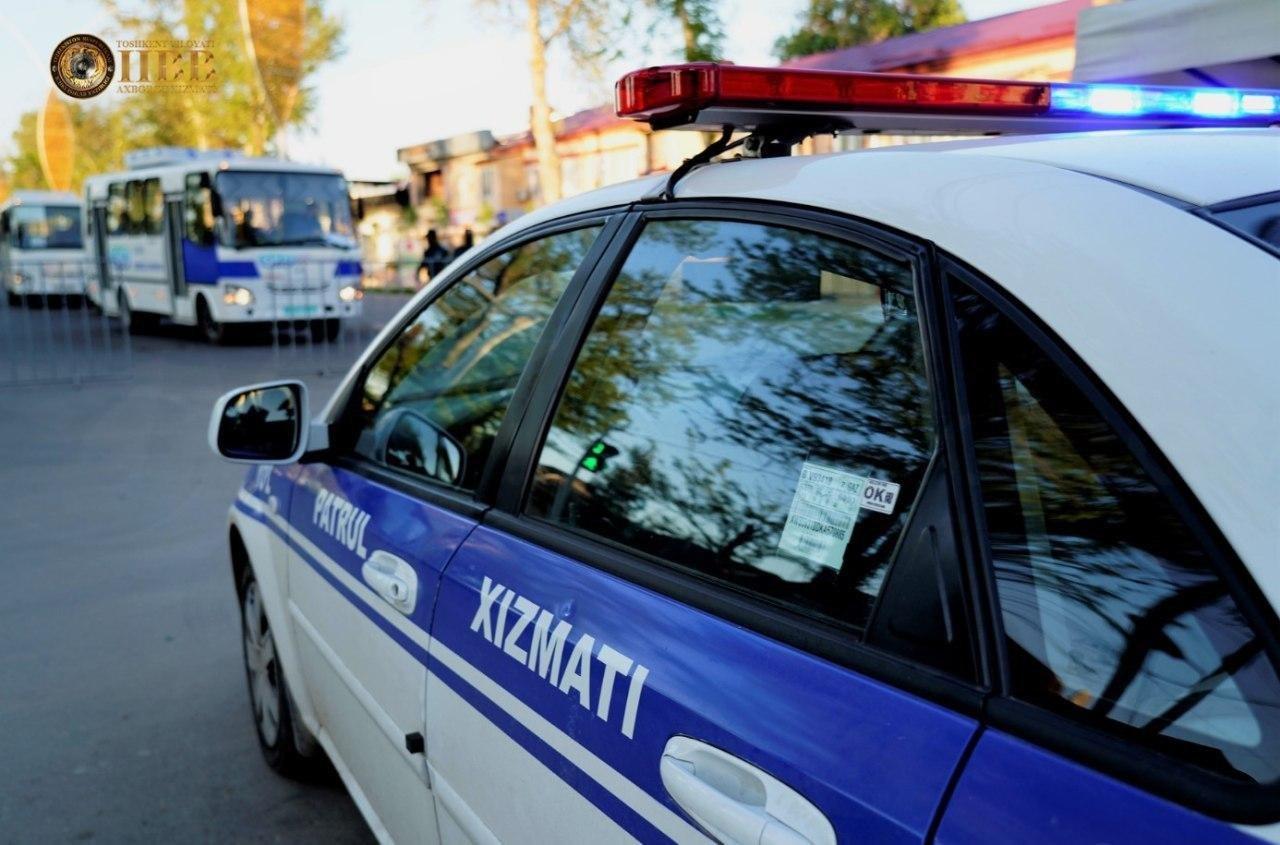This article is also available in:
Русский (Russian)
Uzbek
Today was a real test for Tashkent metro passengers, especially students trying to get to their classes. At the “Bunyodkor” station, there was a massive crowd, which appeared in numerous videos that quickly spread across social media. There wasn’t a single free spot in the vestibule or on the platforms, creating a potential safety hazard for emergencies. So far, there have been no official comments on the situation, but it’s clear that if nothing is done, the situation will only get worse.
A Collapse is Brewing: Causes and Perspectives
“Bunyodkor” is one of the busiest stations in the capital because it is located near some of Uzbekistan’s largest universities, including the National University of Uzbekistan and Tashkent State Technical University. Thousands of students commute here daily, and the metro, as the main mode of transport, simply cannot cope with such a large number of passengers.
Currently, the number of passengers in the metro has increased to 920-930 thousand per day, and by October-November, it is expected to reach 1 million. However, the rolling stock is clearly not designed for such loads. A significant portion of the wagons in the Tashkent metro are still from the Soviet era, having become both morally and physically outdated. The shortage of trains leads to increased intervals between them, which, during peak hours, worsens the situation on the platforms. While the number of passengers grows every year, the city’s transport infrastructure cannot keep pace with this growth.
Tashkent and Moscow are negotiating the supply of 60 new wagons (15 trains) in 2024-2025, but when they will arrive and whether they will fully solve the problem remains unclear. The Russian manufacturer, Metrovagonmash, is under sanctions pressure from the West. In any case, this is not a solution that can be expected in the coming months.
Today’s chaos at “Bunyodkor” is not an exception but, unfortunately, the new reality for many residents of Tashkent. And it’s not just about students — with the start of the academic year, the load on the metro increases, but the problem affects the whole city.
What Can Be Done Right Now?
One proposed measure to ease the load on the metro is to stagger the start times for university classes. In this academic year, classes begin between 8:00 and 9:30, which was supposed to at least partially reduce the morning rush. However, it’s already clear that this time gap is insufficient. To achieve a real effect, this window needs to be extended to 11:00.
Moreover, systematic solutions are needed to reduce the load on the metro:
- Increase the number of trains. Given the shortage of new wagons, it might be worth considering purchasing trains from another manufacturer not under sanctions. If the metro doesn’t have the funds, the government should allocate them from the state budget.
- Develop alternative transport. Ground public transport can be a good alternative. This would require increasing the number of buses and minibusses on key routes, shifting part of the passengers from the metro to buses. Another solution could be launching express buses from key points in the city to the university district.
- Create conditions for cyclists. Developing cycling infrastructure would help ease the load on the metro and reduce the number of people commuting short distances.
- Flexible schedules for government institutions and companies. Not only students but also employees of government agencies could commute at different times. This requires coordination and the implementation of flexible work schedules. For example, the workday in all government offices could start at 10:00.
The Danger of Overcrowding and the Need for Immediate Action
The videos that flooded social media revealed serious risks for passengers at metro stations. The crowding and lack of space could lead to tragic consequences. If the metro situation in Tashkent is not addressed promptly, there is a likelihood of emergencies that could threaten people’s safety.
In conditions where platforms and vestibules are overloaded, the metro authorities must ensure control and prevent possible emergencies right now. The metro must have special safety measures in place for emergency situations.
Tashkent’s metro is on the verge of overload, and today’s events clearly demonstrate this. Winter is coming, when the load on the transport system will only increase, and if immediate measures aren’t taken, the situation could become catastrophic. While new trains are still a distant prospect, the city urgently needs to find both short-term and long-term solutions to this problem. The capital’s transport system must become more flexible, safe, and efficient for all its residents. But the big question is whether there are officials and metro leaders in the capital capable of thinking creatively, outside the box, and pushing through tough but necessary decisions.
It is important to understand that Tashkent is developing at a rapid pace, and the number of residents, students, and tourists will only increase. If today we see an overloaded metro, what will happen in 5-10 years? Solving the problem requires a comprehensive strategy. It’s not only about building new metro lines, but also integrating all types of public transport into a single system.
All of this requires significant investments and time, but there is no other way. Tashkent can no longer afford to ignore the transportation challenges that are becoming part of everyday life for its residents. The time to act is now — and to act quickly, otherwise, we’ll plunge into a true transport collapse.
The text has been translated by AI. For more accurate information, please refer to the Russian version of the article











